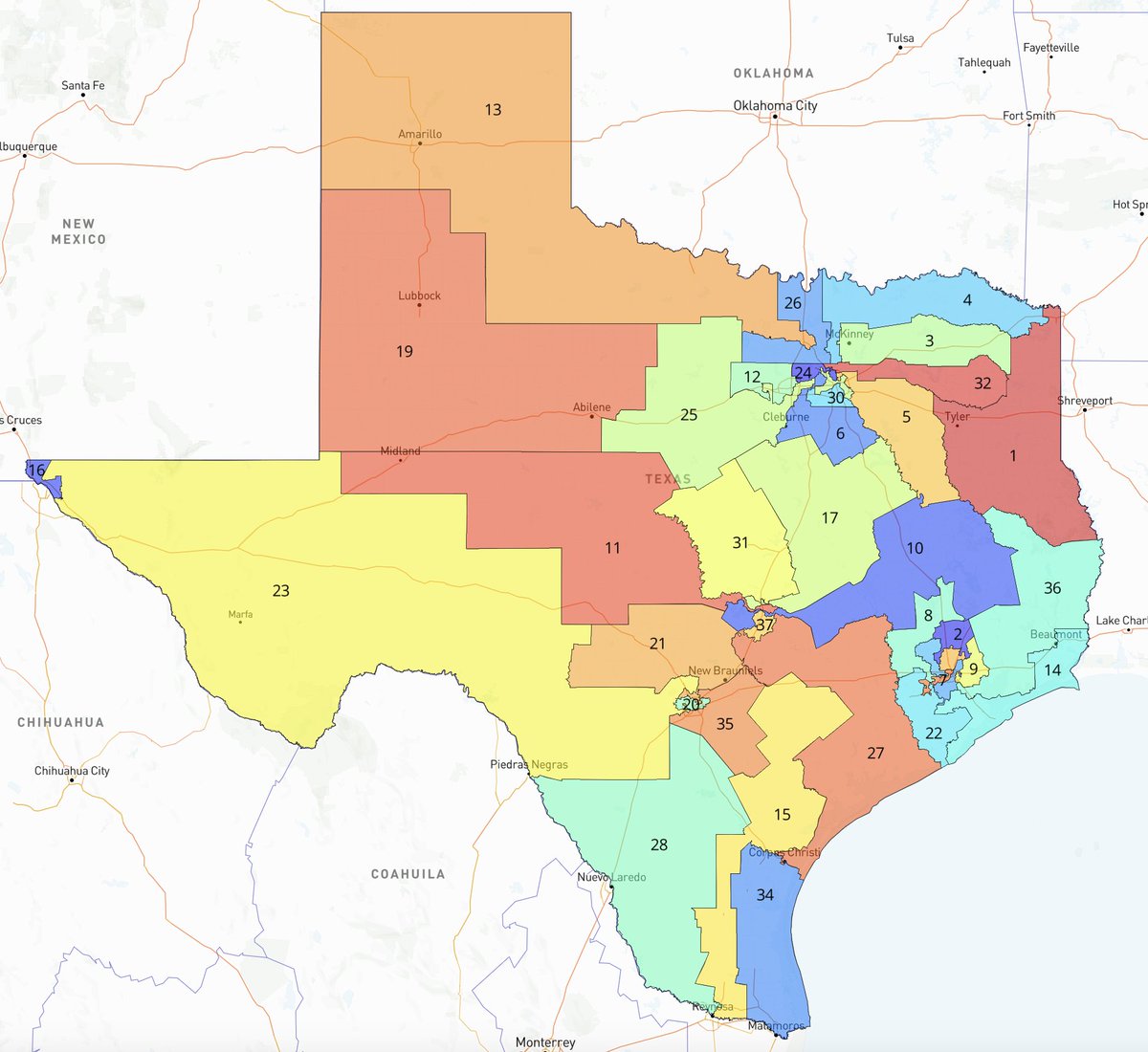TEXAS: Republicans face a redistricting dilemma. They want to win both the state's new seats, but also need to shore up all *nine* of their incumbents who sit in districts where Biden took 47%+.
The likely solution? Rs draw a new *Democratic* district in Austin. Here's why...
The likely solution? Rs draw a new *Democratic* district in Austin. Here's why...

Right now, the TX delegation is 23R-13D. But because Rs currently have the Austin metro area cracked seven ways (below), there are three R incumbents (Roy, Carter, McCaul) sitting in fast-growing Austin-area districts that are unsustainably trending left. 

Drawing a new 75%+ Biden "vote sink" district in Austin (below) - as well as packing Dem voters into Rep. Lizzie Fletcher's (D) #TX07 in Houston and Rep. Colin Allred's (D) #TX32 in Dallas - could resolve the GOP's immediate problems all around the state. 

In the hypothetical 25R-13D Republican gerrymander below, all 25 R seats would have voted for Trump by 10+ points in 2020, and 24/25 would have voted for Trump by 15+ points - locking in GOP dominance for the next decade despite TX's increasing competitiveness. 

Now you might ask: how would Republicans net two seats if they draw a new *Dem* seat in Austin? In the hypothetical above, they would convert retiring Rep. Filemon Vela's (D) #TX34 in the Rio Grande Valley from Biden +4 to Trump +10, while keeping it 70% Hispanic (!). 

This kind of South Texas makeover might actually win support from neighboring #TX15 Rep. Vicente Gonzalez (D), who shockingly came within three points of losing in 2020 and would get a much safer RGV seat in the above scenario.
Of course, Dems could argue that this would severely weaken an existing Hispanic district, #TX34. But Rs could also argue South TX Hispanics are no longer as cohesive a group, given their large pro-Trump swing.
Bottom line: no matter what map Rs draw, expect years of litigation.
Bottom line: no matter what map Rs draw, expect years of litigation.
• • •
Missing some Tweet in this thread? You can try to
force a refresh





